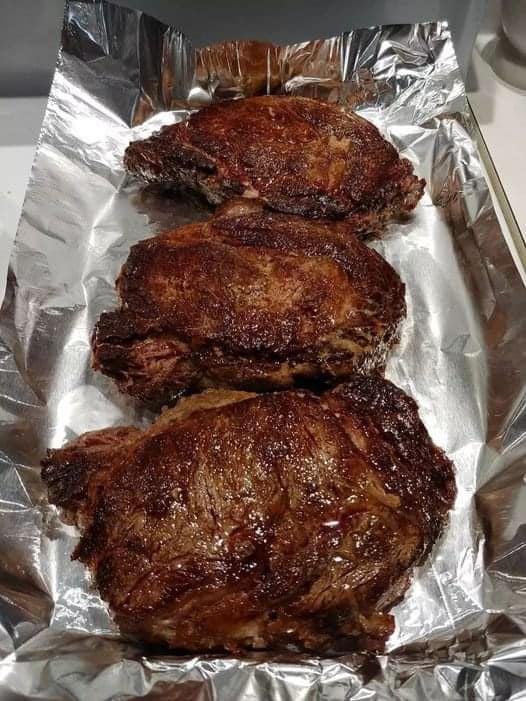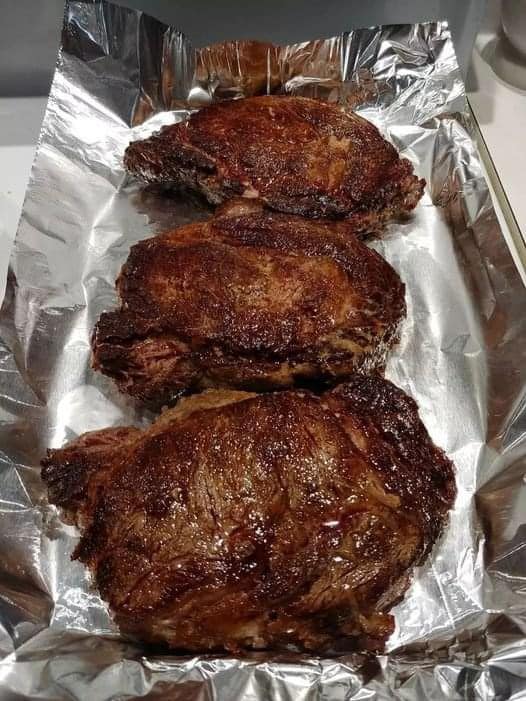
The ribeye steak, often hailed as the king of steaks, is celebrated for its rich marbling and robust flavor. When prepared correctly, it offers a culinary experience that’s both tender and juicy. This guide provides a comprehensive approach to selecting, preparing, and cooking the perfect ribeye steak, ensuring a feast for the senses.
Why Choose Ribeye?
Sourced from the rib section of the cow, the ribeye steak is renowned for its abundant marbling—intramuscular fat that renders during cooking, imparting a succulent taste and tenderness unmatched by other cuts. This marbling not only enhances flavor but also contributes to the steak’s moist and buttery texture, making it a favorite among steak enthusiasts.
Selecting the Perfect Ribeye
When choosing a ribeye, consider the following factors to ensure optimal quality:
-
Marbling: Look for steaks with evenly distributed white flecks of fat throughout the muscle. This marbling is key to flavor and tenderness.
-
Thickness: Opt for steaks that are at least 1.5 inches thick to allow for a good sear while maintaining a juicy interior.
-
Color: Fresh ribeye should have a bright, cherry-red color without any brown spots, indicating freshness.
Preparation Steps
Proper preparation sets the foundation for a delectable ribeye:
-
Bring to Room Temperature: Remove the steak from the refrigerator and let it sit for about 30 minutes. This ensures even cooking throughout the meat.
-
Pat Dry: Use paper towels to remove excess moisture from the steak’s surface. A dry exterior promotes a better sear.
-
Seasoning: Generously season both sides with coarse sea salt and freshly ground black pepper. For added depth, consider a sprinkle of garlic powder or your preferred steak rub.
Cooking Techniques
Achieving the perfect ribeye involves precise cooking methods. Here’s a step-by-step guide:
-
Preheat the Skillet: Place a cast-iron skillet over high heat until it becomes smoking hot. A well-heated skillet is crucial for developing a flavorful crust.
-
Searing: Add a high smoke-point oil, such as avocado or canola oil, to the skillet. Place the seasoned ribeye in the pan and sear for approximately 2-3 minutes on each side, forming a golden-brown crust.
-
Butter Basting: Reduce the heat to medium and add 2 tablespoons of unsalted butter, along with crushed garlic cloves and fresh rosemary or thyme sprigs. As the butter melts, tilt the skillet and spoon the aromatic butter over the steak continuously for about 1-2 minutes. This technique enhances the steak’s flavor and juiciness.
-
Finishing in the Oven: Preheat your oven to 400°F (200°C). After basting, transfer the skillet to the oven. Roast the steak for 5-7 minutes for medium-rare, or adjust the time according to your preferred level of doneness.
-
Resting: Remove the ribeye from the oven and let it rest on a cutting board for 5-10 minutes. Resting allows the juices to redistribute throughout the meat, resulting in a moist and flavorful bite.
Alternative Grilling Method
For those who prefer grilling, the ribeye adapts wonderfully to open flames:
-
Preheat the Grill: Set your grill to high heat, approximately 450°F (232°C). Ensure the grates are clean and lightly oiled.
-
Grilling: Place the seasoned ribeye directly over the heat source. Grill for 4-5 minutes per side for medium-rare, adjusting time as necessary for thickness and desired doneness.
-
Resting: After grilling, let the steak rest for several minutes before slicing to maintain its juices.
Serving Suggestions
A perfectly cooked ribeye pairs excellently with a variety of sides:
-
Classic Mashed Potatoes: Creamy and buttery potatoes complement the steak’s richness.
-
Grilled Asparagus: Lightly charred asparagus adds a fresh, crisp contrast.
-
Caesar Salad: A tangy Caesar salad provides a refreshing balance to the meal.
-
Red Wine: A full-bodied red wine, such as Cabernet Sauvignon or Malbec, enhances the steak’s robust flavors.
Expert Tips
To elevate your ribeye cooking skills, consider these additional insights:
-
Dry Brining: Season the steak with salt and let it rest uncovered in the refrigerator for several hours or overnight. This process enhances flavor and tenderness.
-
Compound Butter: Top the rested steak with a pat of compound butter mixed with herbs, garlic, or blue cheese for an extra layer of flavor.
-
Thermometer Use: Employ an instant-read thermometer to monitor internal temperature, ensuring precise doneness.
Conclusion
Mastering the art of cooking a ribeye steak is a rewarding endeavor that delights the palate. By selecting quality meat, employing proper preparation techniques, and utilizing precise cooking methods, you can create a ribeye experience that’s truly a feast for the senses. Whether seared in a skillet or grilled over open flames, the ribeye’s rich flavor and tender texture make it a standout centerpiece for any meal.
